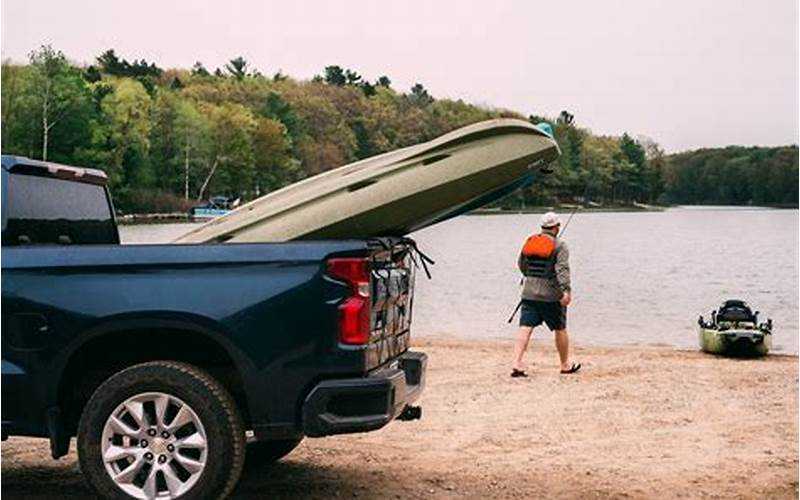
Source: bing.com
An Introduction to Transporting Kayaks
Hello Vehicle Owner! Are you an avid kayaker looking to take your beloved watercraft on your next adventure? Transporting kayaks safely and efficiently is crucial to ensure a seamless journey. In this comprehensive guide, we will explore the various aspects of transporting kayaks, from the strengths and weaknesses of different methods to frequently asked questions and expert tips. So, buckle up and let’s dive into the world of transport kayaks!
Strengths and Weaknesses of Transport Kayaks
Transporting kayaks comes with its own set of strengths and weaknesses. Understanding these aspects will help you make an informed decision about the best method for your specific needs.
Strengths







Weaknesses







Transport Kayak Specifications
| Specification | Details |
|---|---|
| Length | 10-14 feet |
| Weight | 30-70 pounds |
| Material | Plastic, fiberglass, carbon fiber |
| Seating Capacity | 1-3 persons |
| Storage Capacity | 50-150 liters |
| Recommended Accessories | Paddle, life jacket, kayak carrier |
Frequently Asked Questions about Transport Kayaks
1. Can all kayaks be transported?
Yes, most kayaks can be transported. However, it is essential to consider the weight, dimensions, and compatibility with your chosen method of transportation.
2. What is the most common way to transport a kayak?
The most common way to transport a kayak is by using roof racks or kayak carriers attached to your vehicle. This allows for secure and convenient transportation.
3. Are there any legal requirements for transporting kayaks?
Legal requirements may vary depending on your location. However, it is generally recommended to ensure that your kayak is properly secured and does not obstruct your view or violate any road safety regulations.
4. How can I protect my kayak during transportation?
To protect your kayak during transportation, use padded or foam accessories, secure it tightly with straps or ropes, and regularly check for any signs of wear or damage.
5. Can I transport multiple kayaks at once?
Yes, it is possible to transport multiple kayaks simultaneously. Ensure that you have the necessary equipment, such as a kayak trailer or additional roof racks, to accommodate the extra kayaks securely.
6. What is the best way to secure a kayak on roof racks?
To secure a kayak on roof racks, use ratchet straps or cam buckle straps to fasten it tightly. Place foam or padding between the kayak and the racks to prevent scratches or damage.
7. Can I transport a kayak in my car’s trunk?
Transporting a kayak in a car’s trunk is generally not recommended due to limited space. However, some smaller inflatable kayaks may fit in certain car models with foldable seats.
8. How often should I inspect my kayak transport equipment?
It is advisable to inspect your kayak transport equipment before each trip and periodically during the season. Check for any signs of wear, loose straps, or damage that may compromise the security of your kayak.
9. Are there any weight restrictions for transporting kayaks?
Weight restrictions may vary depending on your vehicle’s specifications and the method of transportation. Consult your vehicle’s manual or contact the manufacturer for specific weight capacity guidelines.
10. Can I transport a kayak on a bike?
Transporting a kayak on a bike is challenging due to the size and weight of the kayak. It is recommended to use more suitable methods such as roof racks or kayak trailers for safer and more convenient transport.
11. How can I find kayak transport services for long-distance trips?
You can search online for kayak transport services that specialize in long-distance trips. Ensure that the service provider has the necessary expertise and equipment to ensure the safe delivery of your kayak.
12. Can I transport a kayak on public transportation?
Transporting a kayak on public transportation may not be feasible due to size and weight restrictions. However, some specialized kayak carriers may allow for transportation on certain modes of public transportation.
13. Are there any specific maintenance requirements for transport kayaks?
Regular maintenance for transport kayaks includes cleaning, inspecting for damage, and ensuring proper storage. Follow the manufacturer’s guidelines for maintenance and consult a professional if you notice any significant issues.
Conclusion
In conclusion, transporting kayaks opens up a world of adventure and exploration for vehicle owners. Understanding the strengths and weaknesses of transport kayaks, securing your kayak properly, and adhering to safety guidelines are crucial for a seamless and enjoyable journey. Whether you’re heading to a serene lake or tackling challenging rapids, transporting your kayak with care will ensure that you can make the most of your water-bound escapades. So, get ready to embark on unforgettable kayaking experiences and create memories to last a lifetime!
Final Words
Transporting kayaks requires careful planning, attention to detail, and a commitment to safety. Always consider the specifications of your kayak, the compatibility with your vehicle, and the necessary equipment to secure it during transportation. Remember to regularly inspect your kayak and transport equipment for any signs of wear or damage. By following these guidelines and seeking professional advice when needed, you can enjoy the thrill of kayaking while ensuring the well-being of your kayak and those around you. Happy kayaking!
 MyVans Your Vehicle Solution
MyVans Your Vehicle Solution